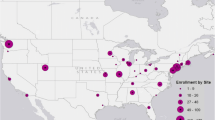Abstract
A population-based cohort was utilized to evaluate medications and intra-articular injection utilization for patients with juvenile idiopathic arthritis (JIA) to inform clinical practice and further research. In a geographically defined population, all incident cases of JIA cases were identified between January 1, 1994 and December 31, 2013 based first on diagnosis code followed by medical chart confirmation. Medications and intra-articular glucocorticoid injections were abstracted. Predictors of the first disease-modifying antirheumatic drug (DMARD)/biologic and injections were reported as a hazard ratio (HR) with 95 % confidence intervals (CIs) adjusted for age and sex. Kaplan-Meier methods evaluated therapy at 6 months and 1 year. Injections were reported per 100 person-years (py) with 95 % CI using the Poisson methods. Seventy-one incident cases were identified. Forty-two (59 %) were female with mean age (standard deviation) at diagnosis of 8.2 (5.3) years. Twenty-six (37 %) utilized at least one DMARD or biologic, in which 77 % of these were prescribed in the first 6 months. Subtype of JIA was significantly associated with DMARDs/biologics (p < 0.001). Intra-articular injections were performed in 48 %. The rate of intra-articular injections was 20.7 per 100 py (95 % CI 16.5, 25.6). The rate of joint injections was higher in the first year after diagnosis (p < 0.001) and more common in recent years (p < 0.001). The majority of patients with JIA in a modern population-based cohort do not require DMARDs or biologics. In those who do, the majority receives these within the first 6 months. Intra-articular injections were utilized in almost half of patients with JIA and were increasingly used.
Similar content being viewed by others
Abbreviations
- JIA:
-
Juvenile idiopathic arthritis
- DMARD:
-
Disease-modifying antirheumatic drug
- TNFi:
-
Tumor necrosis factor inhibitors
- NSAIDs:
-
Non-steroidal anti-inflammatory drugs
References
Beukelman T, Patkar NM, Saag KG, Tolleson-Rinehart S, Cron RQ, DeWitt EM et al (2011) 2011 American College of Rheumatology recommendations for the treatment of juvenile idiopathic arthritis: initiation and safety monitoring of therapeutic agents for the treatment of arthritis and systemic features. Arthritis Care Res (Hoboken) 63(4):465–482. doi:10.1002/acr.20460
Tarkiainen M, Tynjala P, Vahasalo P, Lahdenne P (2014) Occurrence of adverse events in patients with JIA receiving biologic agents: long-term follow-up in a real-life setting. Rheumatology (Oxford). doi:10.1093/rheumatology/keu457
Nordal E, Zak M, Aalto K, Berntson L, Fasth A, Herlin T et al (2011) Ongoing disease activity and changing categories in a long-term nordic cohort study of juvenile idiopathic arthritis. Arthritis Rheum 63(9):2809–2818. doi:10.1002/art.30426
Beukelman T, Ringold S, Davis TE, DeWitt EM, Pelajo CF, Weiss PF et al (2012) Disease-modifying antirheumatic drug use in the treatment of juvenile idiopathic arthritis: a cross-sectional analysis of the CARRA Registry. J Rheumatol 39(9):1867–1874. doi:10.3899/jrheum.120110
Colebatch-Bourn AN, Edwards CJ, Collado P, D’Agostino MA, Hemke R, Jousse-Joulin S et al (2015) EULAR-PReS points to consider for the use of imaging in the diagnosis and management of juvenile idiopathic arthritis in clinical practice. Ann Rheum Dis. doi:10.1136/annrheumdis-2015-207892
Petty RE, Southwood TR, Manners P, Baum J, Glass DN, Goldenberg J et al (2004) International League of Associations for Rheumatology classification of juvenile idiopathic arthritis: second revision, Edmonton, 2001. J Rheumatol 31(2):390–392
Kremers HM, Myasoedova E, Crowson CS, Savova G, Gabriel SE, Matteson EL (2011) The Rochester Epidemiology Project: exploiting the capabilities for population-based research in rheumatic diseases. Rheumatology (Oxford) 50(1):6–15. doi:10.1093/rheumatology/keq199
Krause ML, Crowson CS, Michet CJ, Mason T, Wampler Muskardin T, Matteson EL. Juvenile idiopathic arthritis in Olmsted County 1960–2013. Arthritis Rheumatol. 2015
Manners PJ, Bower C (2002) Worldwide prevalence of juvenile arthritis why does it vary so much? J Rheumatol 29(7):1520–1530
Anink J, Dolman KM, Merlijn van den Berg J, van Veenendaal M, Kuijpers TW, van Rossum MA (2012) Two-year outcome of juvenile idiopathic arthritis in current daily practice: what can we tell our patients? Clin Exp Rheumatol 30(6):972–978
Beukelman T, Haynes K, Curtis JR, Xie F, Chen L, Bemrich-Stolz CJ et al (2012) Rates of malignancy associated with juvenile idiopathic arthritis and its treatment. Arthritis Rheum 64(4):1263–1271. doi:10.1002/art.34348
McErlane F, Foster HE, Davies R, Lunt M, Watson KD, Symmons DP et al (2013) Biologic treatment response among adults with juvenile idiopathic arthritis: results from the British Society for Rheumatology Biologics Register. Rheumatology (Oxford) 52(10):1905–1913. doi:10.1093/rheumatology/ket248
Guzman J, Oen K, Tucker LB, Huber AM, Shiff N, Boire G et al (2014) The outcomes of juvenile idiopathic arthritis in children managed with contemporary treatments: results from the ReACCh-Out cohort. Ann Rheum Dis. doi:10.1136/annrheumdis-2014-205372
Otten MH, Anink J, Prince FH, Twilt M, Vastert SJ, Ten Cate R et al (2015) Trends in prescription of biological agents and outcomes of juvenile idiopathic arthritis: results of the Dutch national Arthritis and Biologics in Children Register. Ann Rheum Dis 74(7):1379–1386. doi:10.1136/annrheumdis-2013-204641
de Oliveira Sato J, de Albuquerque Pedrosa Fernandes T, de Bicalho do Nascimento C, Corrente JE, Saad-Magalhaes C (2014) Probability of remission of juvenile idiopathic arthritis following treatment with steroid joint injection. Clin Exp Rheumatol 32(2):291–296
Author information
Authors and Affiliations
Corresponding author
Ethics declarations
Disclosures
None.
Grants/financial supports
This study was made possible using the resources of the Rochester Epidemiology Project, which is supported by the National Institute on Aging of the National Institutes of Health under Award Number R01AG034676 and CTSA Grant Number UL1 TR000135 from the National Center for Advancing Translational Sciences (NCATS), a component of the National Institutes of Health (NIH). The content is solely the responsibility of the authors and does not necessarily represent the official views of the National Institutes of Health.
Rights and permissions
About this article
Cite this article
Zamora-Legoff, J.A., Krause, M.L., Crowson, C.S. et al. Treatment of patients with juvenile idiopathic arthritis (JIA) in a population-based cohort. Clin Rheumatol 35, 1493–1499 (2016). https://doi.org/10.1007/s10067-016-3190-4
Received:
Accepted:
Published:
Issue Date:
DOI: https://doi.org/10.1007/s10067-016-3190-4




